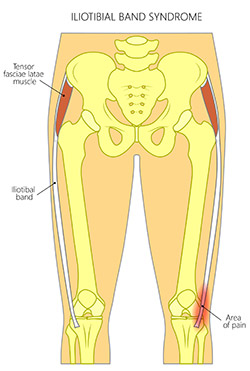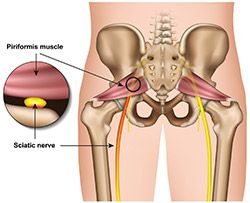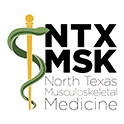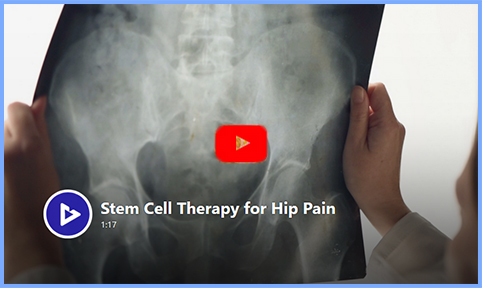Hip Conditions

At the hip, muscles, ligaments, and tendons function to stabilizing the joint. Ligaments are fibrous structures that connect bones to other bones. The hip joint is encircled with ligaments that provide stability by forming a dense and fibrous structure around the joint capsule called the labrum. Athletes who participate in sports such as hockey, soccer, football, golf and ballet are at higher risk of developing a tear in the labrum. The labrum also functions to cushion the joint.
Articular cartilage, a thin, tough, flexible tissue surrounds the ball portion of the hip joint. It is lubricated by synovial fluid, much like oil lubricates a car engine. When synovial fluid is reduced with age, this tissue wears thin and arthritis occurs from resulting friction and inflammation.
Treatment Options
Osteopathic Manipulative Treatment (OMT) is particularly effective in tight or spasmodic conditions of the muscles and connective tissues, allowing them to return to normal function and relieve pain. With impingements removed, body fluids flow more freely to nourish and heal painful tissue.
 Regenerative Procedures accelerate and enhance your natural healing process. Platelet Rich Plasma Therapy (PRP) and Bone Marrow Aspirate. Concentrate (BMAC), commonly known as Stem Cell Therapy supply autologous healing cells to areas of the body that have difficulty healing on their own due to poor blood supply or where healing cells are limited from chronic injury or aging. Blood flow to the affected area is increased, removing damaged tissue and supplying cells necessary to the healing process.
Regenerative Procedures accelerate and enhance your natural healing process. Platelet Rich Plasma Therapy (PRP) and Bone Marrow Aspirate. Concentrate (BMAC), commonly known as Stem Cell Therapy supply autologous healing cells to areas of the body that have difficulty healing on their own due to poor blood supply or where healing cells are limited from chronic injury or aging. Blood flow to the affected area is increased, removing damaged tissue and supplying cells necessary to the healing process.
Regenerative procedures are beneficial for athletes or anyone who experiences microtears in the labrum or painful arthritis resulting from reduced articular cartilage in the joint. Regenerative procedures directly supply healing cells needed for faster, more complete healing.
Benefits of Regenerative Medicine
Natural Healing:
Regenerative Medicine treatments harness the body's innate healing mechanisms, promoting long-term recovery rather than temporary symptom relief.
Enhanced Tissue Repair:
Regenerative Medicine aims to repair and regenerate damaged tissues, potentially restoring function and reducing the need for more invasive treatments.
Reduced Risk of Side Effects:
Unlike corticosteroids, regenerative therapies generally have fewer and less severe side effects, as they use natural substances from the patient's own body.
What Are Regenerative Medicine Procedures?
Regenerative medicine offers a transformative approach to treating musculoskeletal conditions by harnessing the body's natural healing capabilities.
- Platelet-Rich Plasma (PRP) Therapy: PRP therapy involves extracting a small amount of the patient's blood, processing it to concentrate the platelets, and injecting this platelet-rich plasma into the injured area. PRP is rich in growth factors that promote tissue repair and regeneration.
- Bone Marrow Aspirate Concentrate (BMAC) commonly known as Stem Cell Therapy: BMAC uses the patient's own stem cells, typically harvested from bone marrow or adipose tissue, to promote healing. These stem cells can differentiate into various types of cells needed for repair, such as cartilage or tendon cells.
- Prolotherapy: Prolotherapy involves injecting a solution, often containing dextrose, into the damaged area. This solution irritates the tissue, triggering the body's natural healing response and promoting the repair of ligaments and tendons.
Regenerative procedures are designed to help reduce knee pain and improve function with precise
highly specific image-guided medical procedures.
To determine if Regenerative Orthopedics will be helpful for you, please tell us about your condition.
Understanding the Risks of High-Dose Corticosteroid Injections
The management of pain and inflammation is a critical aspect of patient care in musculoskeletal medicine. High-dose corticosteroid injections have been a mainstay treatment for various conditions such as arthritis, tendonitis, and bursitis. However, while these injections can provide rapid relief, they are not without significant risks. Learn more about the negative effects of cortisone in Dr. Minotti's blog.
The Downside of High-Dose Corticosteroid Injections
Corticosteroid injections work by reducing inflammation, thereby alleviating pain. However, the use of high-dose corticosteroids comes with several potential adverse effects:
Joint and Tissue Damage: Repeated corticosteroid injections can lead to the weakening of tendons, cartilage, and bone. This can result in joint instability and an increased risk of tendon ruptures.
Osteoporosis: High doses of corticosteroids can accelerate bone loss, increasing the risk of fractures and osteoporosis.
Infection Risk: Corticosteroid Injections can suppress the immune system, potentially leading to infections such as septic arthritis.
Endocrine Disruption: Corticosteroids can interfere with the normal function of the adrenal glands, potentially causing hormonal imbalances and conditions such as Cushing's syndrome.
Short-Term Relief: While corticosteroids can provide rapid pain relief, this effect is often temporary, necessitating repeated injections and increasing the risk of cumulative damage.
Common Aplications

Osteoarthritis. Osteoarthritis is one of the most common causes of chronic hip pain for both athletes and non-athletes alike. It is characterized by damaged articular cartilage that lines the hip joint. Over time, the smooth, protective cartilage of the hip socket wears down and bare bone is exposed, making movement painful. Osteoarthritis is an active disease process that causes degeneration of the cartilage surface. Regenerative procedures offer an alternative to joint replacement and harmful steroids.
Groin pulls and strains. Hip and groin disorders are more common in athletes and generally caused by rapid acceleration and deceleration motions. The connecting tissues are stretched beyond their limits, resulting in small tears that cause pain and swelling. The rehabilitation time for hip and groin injuries are longer than most other injuries, making early and accurate diagnosis essential.
Iliotibial band syndrome. Iliotibial (IT) band syndrome is an overuse injury resulting in the inflammation of the thick band of fibrous tissue that begins at the iliac crest of the hip and runs along the outside of the thigh. The band attaches to the outer side of the shin bone just below the knee joint. Its function is to coordinate with the thigh muscles and provide stability to the knee. Iliotibial band syndrome occurs when the IT band and the lower outside portion of the thighbone rub against each other. It commonly occurs in athletes, cyclists, and runners. Knee pain from this injury is most commonly felt along the outside of the knee and lower thigh. IT band syndrome may also result in a nagging or acute pain on the outside of the hip.
Trochanteric bursitis. Greater trochanter bursitis, also called hip bursitis, is a condition caused by inflammation of the bursa that overlies the greater trochanter (bony prominence at the outer side of the hip). A bursa is a small sac filled with fluid that acts as a cushion and allows smooth motion by reducing the friction between the muscles and the bone. The condition causes pain in the outer portion of the upper thigh. It is commonly seen in runners due to overuse, but can also be caused by a fall or other impact. Patients who have had surgery for repair of hip fracture or hip replacement also experience bursitis.
Piriformis syndrome. The piriformis muscle is a small muscle in the groin that runs from the sacrum to the outer hip bone. When the piriformis muscle becomes tight or cramps, it can put pressure on the sciatic nerve that passes underneath it. Typically, this pain increases when the muscle contracts, when sitting for an extended time, or with direct pressure on the muscle. Gluteal pain is common. Piriformis syndrome is also a common cause of sciatica.
We Can Help
To learn more about what we can do to help you, please call our office at 817-416-0970. We will thoroughly diagnose your condition and present you with treatment options. From there we will guide you along your road to recovery.

